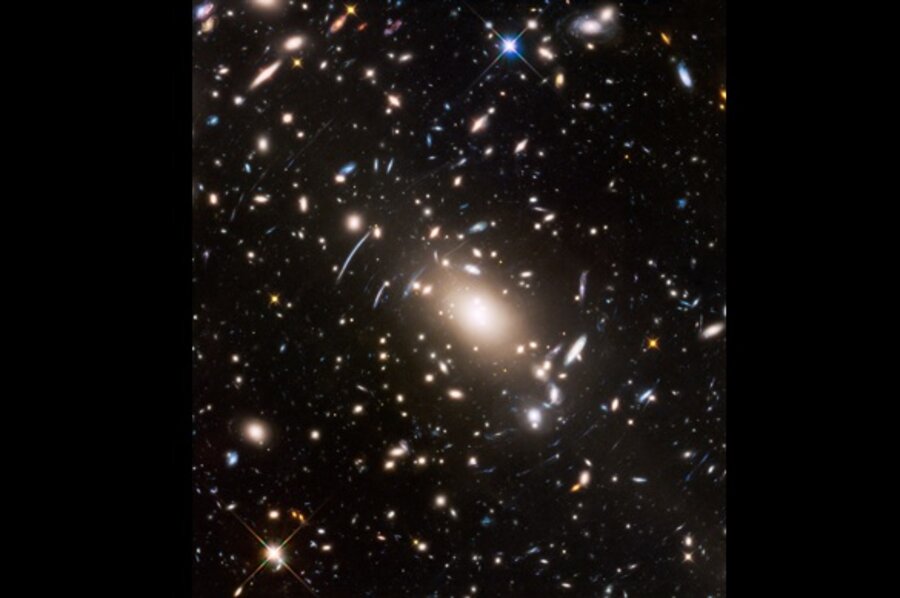Hubble boldly peers where no man has gone before
Loading...
The European Space Agency (ESA) must employ some serious "Star Trek" fans.
The "Frontier Fields" program by the ESA and NASA has released an astronomical blockbuster, a view of the most recent accomplishments from the Hubble telescope, and it came out Friday: the day that "Star Trek – Beyond" hits theaters in honor of the 50-year anniversary of Gene Roddenberry's original "Star Trek" TV series.
"Fifty years ago Captain Kirk and the crew of the starship Enterprise began their journey into space – the final frontier," wrote the ESA in a press release. "Now, as the newest Star Trek film hits cinemas, the NASA/ESA Hubble space telescope is also exploring new frontiers, observing distant galaxies in the galaxy cluster Abell S1063 as part of the Frontier Fields programme."
The Hubble image shows the galaxy cluster Abell S1063, which contains at least 51 known galaxies with the possibility of another 400, NASA writes. Astronomers from across Europe and NASA have used Hubble to view galaxy clusters because their massive size aids their study of astronomy. They are so large that gravity warps space itself in an effect called "gravitational lensing." This allows astronomers to look even further "beyond" the known universe to reveal "a very cluttered-looking universe filled with galaxies."
"When 'Star Trek' was first broadcast in 1966, the largest telescopes on Earth could only see about halfway across the universe – the rest was uncharted territory," NASA wrote in a press release.
Now, use of the Hubble telescope coupled with gravitational lensing has extended Earth's visual reach several times over. Gravitional lensing, first theorized by Einstein, is possible because of dark matter, a substance whose existence was discovered only because of its gravitational effect on the rest of the universe. Dark matter represents a "new physics frontier," Pete Spotts wrote for The Christian Science Monitor:
The notion that the universe is full of dark matter first cropped up in the early 1930s as astronomers noted that if the gravity from all the visible matter in a rotating galaxy was the only gravity at play there, it would be too weak to hold the galaxy together. More recently, large accumulations of dark matter associated with clusters of galaxies have been enlisted as gravitational lenses. Their intense gravitational fields bend light in ways that mimic optical lenses.
Dark matter makes up 85 percent of the universe's mass but does not interact the way other particles do. Its gravity, however, helps hold galaxy clusters such as Abell S1063 together. In the image released Friday, it helped astronomers to observe 16 additional galaxies in the background of the Abell galaxy cluster, Space.com reported. This information will improve gravitational models to enhance our understanding of mysterious dark matter.
The image also offers a "sneak peak" into where space exploration will boldly go next, NASA writes, as the James Webb Space Telescope will look even further into the universe's early galaxy cluster when it launches in 2018.








